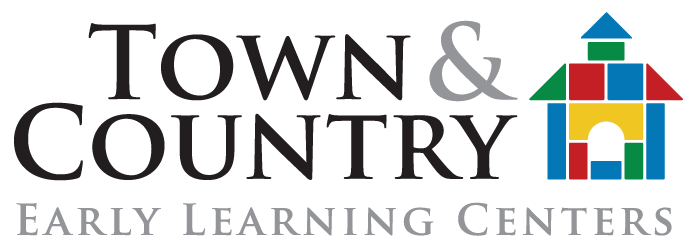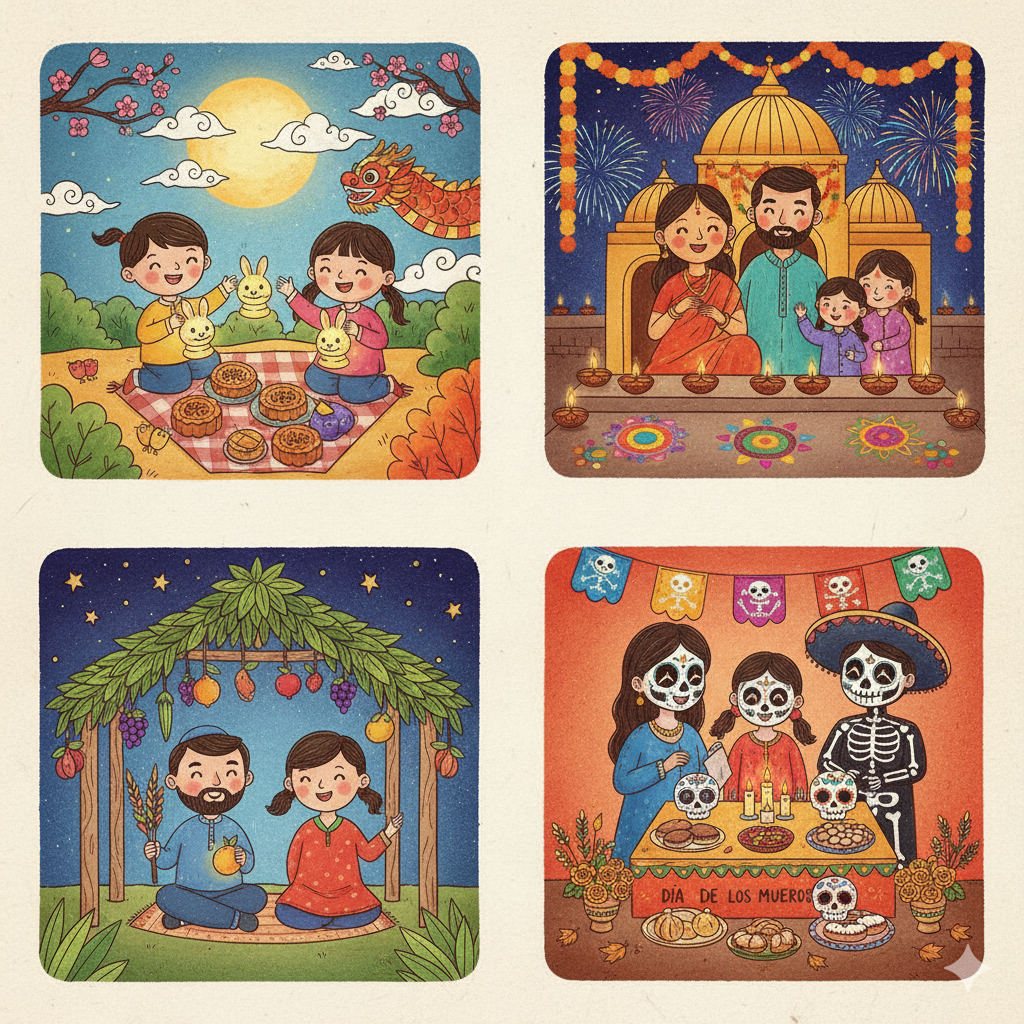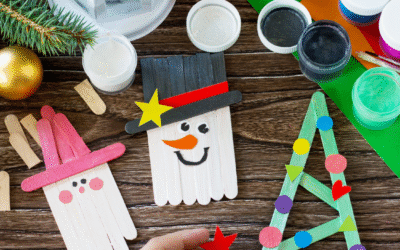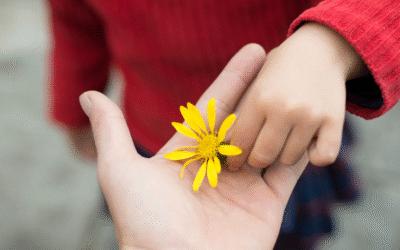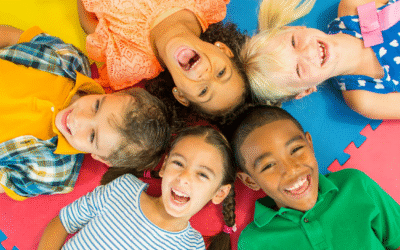Fall is a season of vibrant change, cozy gatherings, and meaningful celebrations. In early childhood education, it’s also a perfect time to explore the rich tapestry of cultural traditions that families bring to our classrooms. By embracing inclusive fall celebrations, we help children build empathy, curiosity, and a sense of belonging- values that are foundational to lifelong learning.
Why Inclusive Celebrations Matter
Young children begin forming their understanding of identity and community early on. When classrooms reflect the diverse backgrounds of their families, children feel seen and valued. Culturally responsive teaching- using students’ cultural knowledge and experiences to make learning more relevant- has been shown to improve engagement and outcomes in early education (Gay, 2018). [Culturally…Education]
Celebrating a variety of fall traditions also helps children appreciate the beauty of difference and the joy of shared experiences. As Armstrong (2020) notes, inclusive classrooms foster respect and connection among children from all backgrounds. [Leadership…ls | NAEYC]
Fall Traditions and Craft Ideas for Young Learners
Mid-Autumn Festival (East Asia)
This festival celebrates the full moon and family unity. It’s often marked by lanterns, mooncakes, and stories like the legend of Chang’e and the Jade Rabbit.
Craft Ideas:
- Paper Lanterns: Children can decorate plain lanterns with paint or stickers, or make their own from colored paper. [Diversity…| Edutopia]
- Pebble Bunny Paperweights: Paint pebbles white, add felt ears and a pompom tail to create a moon rabbit. [Diversity…| Edutopia]
- Mooncake Boxes: Use printable templates to make cardboard mooncake gift boxes. [Diversity…| Edutopia]
Diwali (India and South Asia)
Known as the Festival of Lights, Diwali celebrates the triumph of light over darkness and good over evil.
Craft Ideas:
- Paper Diyas: Children can fold and decorate paper oil lamps using glitter and bright colors. [Culturally…| Edutopia]
- Rangoli Art: Create colorful floor patterns using dyed rice, salt, or playdough. [Culturally…| Edutopia]
- Henna Handprints: Use washable markers or paint to mimic traditional henna designs on paper hands. [Culturally…| Edutopia]
Sukkot (Jewish Tradition)
A harvest festival celebrated in temporary shelters called sukkahs, Sukkot emphasizes gratitude and hospitality.
Craft Ideas:
- Mini Sukkah for Stuffed Animals: Build small sukkahs using popsicle sticks, fabric, or cardboard. [What a Cul…Classrooms]
- Painted Gourds: Decorate seasonal gourds with faces or patterns to hang in a classroom sukkah. [What a Cul…Classrooms]
- Bird Feeder Decorations: Use cereal and string to make sukkah decorations that double as bird feeders. [What a Cul…Classrooms]
Día de los Muertos / Day of the Dead (Mexico)
Celebrated on November 1-2, this holiday honors loved ones who have passed with joy, color, and remembrance.
Craft Ideas:
- Sugar Skull Masks: Decorate paper plates or printable skulls with bright colors and patterns. [Creating a…Classroom]
- Paper Marigolds: Make tissue paper flowers to represent the traditional blooms that guide spirits home. [Creating a…Classroom]
- Mini Ofrendas: Create small altars with photos, drawings, and meaningful items to honor loved ones. [Creating a…Classroom]
Creating Inclusive Classrooms
In our early learning center, we:
- Invite families to share their traditions through stories, photos, or classroom visits.
- Use books, songs, and materials that reflect a variety of cultures.
- Encourage open-ended play and art that allows children to express their own experiences.
- Celebrate not just holidays, but the values behind them- like gratitude, light, and remembrance.
Book Picks to Support Cultural Learning
- “Binny’s Diwali” by Thrity Umrigar
- “Mooncakes” by Loretta Seto
- “We Are Grateful: Otsaliheliga” by Traci Sorell
- “Clatter Bash! A Day of the Dead Celebration” by Richard Keep
Final Thoughts
Inclusive fall traditions help children see that their stories matter- and that the world is full of beautiful differences worth celebrating. By crafting, storytelling, and sharing together, we build a classroom culture rooted in respect, joy, and connection.
